
Fall Allergies
Hi everyone, and thanks for joining me on this edition of Val Talk’s Pets. In this edition, I am going to talk about fall allergies. The rise in pet parents […]
 play_arrow
play_arrowStop Guessing in the Chew Aisle: The Smart Way to Choose Dog Chews Val Cairney

 play_arrow
play_arrowThe Shoulds of Cat Parenthood Val Cairney

Hi everyone, and thank you for joining me on this edition of Val Talk’s Pets. Everyone is familiar with the adage, “Coulda, Shoulda, Woulda”. So I thought I would discuss the “Shoulds” of cat parenthood by looking at the Top 5 cat questions that begin with “should”.
So let’s begin.
There is nothing cuter than seeing a little collar on a kitty with something cute as a design. But do they need to be wearing a collar? Let’s break this down a bit into indoor and semi-outdoor cats.
Indoor cats don’t usually wear a collar. An indoor cat wearing a collar would be for the benefit of the human. If however, the cat is a flight risk, meaning it is a little opportunist who will bolt out the door at any given chance, then yes, maybe the cat should be wearing a collar, with I.D! There is no point in having a collar on your cat if there is no ID. If however, your cat is content being an indoor cat I don’t see any reason why the cat should be wearing a collar. I’m sure it can be somewhat uncomfortable over time.
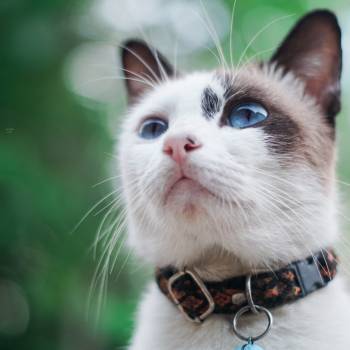
If your cat goes outside, and I qualify here, responsibly, meaning not out all night or left to roam, then yes, this cat should be wearing a collar. As I’ve mentioned in other episodes, my cat Rory goes outside only when we are home and has a curfew. He pretty much just wanders the property a bit and sits on one of the chairs out front. Rory has to have his collar on before going out and when he comes in I take his collar off. He has an ID tag with his name and our phone numbers.
Collars in general for cats should always be a breakaway collar. This means that if the cat gets caught on a branch or something the collar with break away at the clasp and free the cat. Now, I know, there are a bunch of cat owners, screaming right now, that they are sick of buying collars for the cat because he has lost so many that are breaking away. I know! Rory lost four collars all with ID tags and I never found a single one. But, the collar he has now is different.
This collar is still a safety collar, but instead of letting go at the clasp when pulled, it has an elastic piece and if he gets caught, once he pulls, the elastic will stretch and he can get his head out. He has had this collar for quite a few years now, so it is working.
I have had frustrated cat parents looking for a collar that won’t break away and they want to put a small dog collar on the cat, I do not recommend this. It’s frustrating to lose cat collars, but it is dangerous for a cat to be wearing a dog collar that he cannot get off. I say, try the elastic style or buy a really good quality breakaway. Believe it or not, the cheap dollar store collars will give away with hardly any effort, so getting a good collar may be the answer.
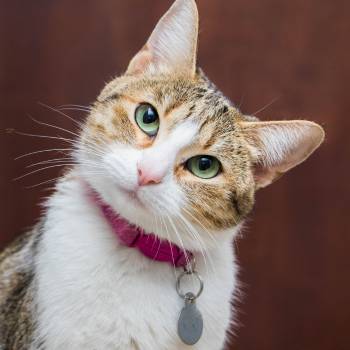
I don’t think a cat should be outside without a proper collar with ID. Now, I know, some parents say, it doesn’t matter, the cat is microchipped. I’ve even read an article that suggested that for safety the cat shouldn’t wear a collar, microchipping is best. Well, I can tell you, I always recommend an ID collar, even with a microchip because if someone finds your cat and there is no collar with ID, you have to rely on this person’s commitment to a cat they have found either alive or dead, and take it to a place that has a chip reader.
Some animal control agencies do have wireless readers in their vehicles, but not many. If someone finds a cat, dead or alive wearing an ID collar, the person is so much more likely to call you to say they found your cat. Imagine driving down a somewhat quiet road and you see a cat lying on the side. Your headlights glint off the collar. The reaction is more than likely, “Stop, that cat has a collar; it belongs to someone.” Without a collar, the reaction is more, “Oh no, there is a dead cat there, poor kitty” and the driver keeps going.
So, the bottom line on whether a cat should wear a collar is, yes, if they go outside, or if they are a flight risk.
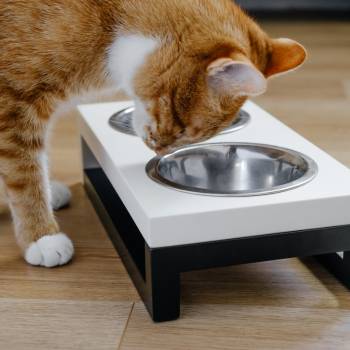
Let’s explore the idea of an elevated bowl. According to catster.com, a slightly raised bowl may help with posture as the cat doesn’t have to lean down. This idea of a raised bowl can work well with a senior cat who may be experiencing mobility issues. Catster further points out that, “some manufacturers claim that elevated bowls reduce indigestion or vomiting by changing the angle your cat is eating and drinking to aid the movement of food into the stomach.” On the downside, not all cats like an elevated bowl and prefer something more traditional and a raised bowl may encourage a cat to eat faster. I do think, however, that if you have a cat that throws up somewhat regularly, trying an elevated bowl is worth it.
Another type of bowl for cats is a tilted bowl. I have one of these for Rory. According to Amazon.com, a 15-degree tilt has been “shown to be effective in relieving pressure on the cat’s neck and stomach during eating, preventing vomiting and being suitable for digestion.” As well, a cat that is experiencing stiffness, particularly in the neck, could feel a lot more comfortable eating with a tilted bowl.
So, elevated or tilted, either could help with digestion and reduce vomiting and be friendlier for senior cats or cats with mobility issues. But, remember, cats will eat treats or other things off the floor or a mouse if they get one and drink out of a puddle. A raised or tilted bowl may have no benefit. Should you have a raised or tilted bowl for your cat? Maybe, especially if the cat is senior or has digestive issues.
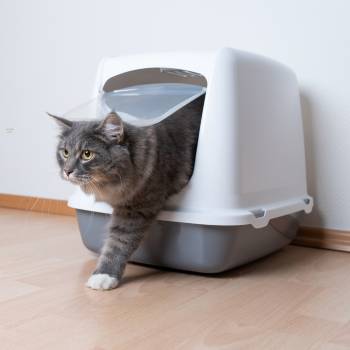
Generally speaking, a cat should poop at least once a day, possibly two. There is a rule of thumb that a mammal should poop for each significant meal eaten. Cats therefore would poop once or twice a day. However, a cat pooping many times a day or hasn’t pooped in 48 hours, would be a concern and it would be recommended to see a vet. The other thing to observe with your cat’s poop is the consistency. Is the cat’s poop mushy or loose? Is it hard as a rock? Does it smell?
A change in diet could easily address these issues, but if not, again a vet visit is in order. A cat that is constipated is a serious situation and a question I get more than you realize. Pumpkin is great for getting things moving or firming things up, but I can tell you, getting a cat to eat pureed pumpkin is not always easy. Dogs are pretty good with pumpkin, but cats??? They often turn their nose up and then what do you do? Because cats are all about tasting fat, a little bit of coconut oil, and just a little bit, might get things moving if the cat is constipated.
So, should a cat poop every day? Pretty much!
Well, the answer here is yes. Warm is fine. According to sharonlakes.com, “a normal temperature for cats is higher (than a human) between 10 and 102.5” “If your cat is acting normal otherwise, then there shouldn’t be any need to worry.” Also, according to allcarepetclinic.com, “to avoid overheating in hot weather, blood flow increases to your cat’s ears, paws and nose so they can release excess heat more easily.”
A cat’s ears being warm is normal, but hot is not. A cat’s ears feeling hot could be an ear infection or fever. A cat may just be regulating its temperature, but I would be concerned about hot ears longer than 24 hours and if the cat is feeling under the weather.
Should a cat’s ears be warm? Yes, but be concerned if they are hot for more than a day.
Well you know this is a controversial question. I have dealt with this in other episodes. I think we need to qualify what is meant by an outdoor cat, a semi-outdoor cat and an indoor cat.
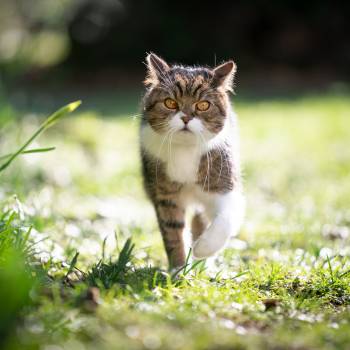
An outdoor cat is usually a cat that pretty much stays outside, roaming. These cats often live in barns or do not have homes. Some have homes, but don’t live in the house but maybe on an enclosed porch or a garage. I would say an outdoor cat is not a pet in the home but is a cat that is cared for but isn’t the one that cuddles in the bed with you.
A semi-outdoor cat is more the type of cat that I hear about and have myself. These are cats that are valued pets, that are loved and cared for with all the cuddles, toys and soft beds that a family cat enjoys, but they get outdoor time as well, unsupervised. As I stated earlier, Rory goes out. He is usually on one of the chairs out front, or under it and if we are in the back BBQ-ing or enjoying outdoor time, he is there too, on one of the chairs or lying nearby Tundra in the shade.
Rory is never allowed out when we are not home and he must be inside by a certain time. He will go out for anywhere from 10 minutes in the winter, to a few hours in the summer. Many of my friends and cat people I encounter, have this kind of cat. And they all wear collars with ID.
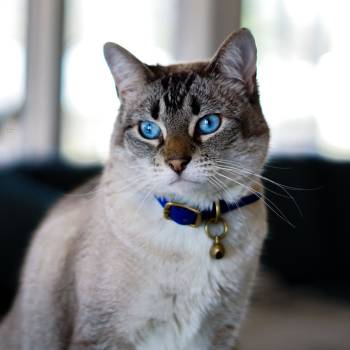
An indoor cat is just that, a cat that stays indoors all the time. Now here is another type of cat that I’m not sure how to categorize. Some cats go outside but on a harness and a tie out or a leash and are supervised. Some other cats have the luxury of having a whole habitat built for them complete with a cat door that lets them go outside but within a contained enclosure. This way the cat can enjoy outdoor time without running away or getting attacked by a wild animal.
Pros and cons of cats going outside include exposure to being attacked by a wild animal or another cat which could be a stray with disease or a dog. Also, as spca.bc.ca points out, an outdoor cat could risk exposure to disease, theft being run over by a car etc. Also, cats that roam outside whether close to home or not, can prey on songbirds and small animals and dig in the garden or your neighbour’s garden. But, cats that go outside in some capacity get fresh air and stimulation.
Indoor cats stay safe but can experience depression or frustration and can get overweight. An indoor cat’s food exercise and play time are vital.
So, should your cat go outside? Well, that depends. I don’t think it’s a matter of “should”, it’s a matter of circumstance and choice.
Well, that’s a few of the “should” questions that cat parents often ponder. Shoulda, woulda, coulda. What a phrase to express uncertainties or missed opportunities. As for cats, the main “should” I know is you should care for them, love them, play with them and get them fixed. Hopefully some of the other “should” questions, I have answered. But, as always a little research goes a long way, because as I say, knowing is caring!

Tagged as: Should my cat’s ears be warm, Should my cat wear a collar, Should my cat poop every day, should my cat go outside, Should my cat use an elevated slanted bowl.
Hi everyone, and welcome to Val Talk’s Pets, the forum for pet parents and enthusiasts alike. So, I have been working in the pet industry now for almost 10 years and, on a daily basis, I handle a lot of issues and questions arising from pet parents. I am not a veterinarian but I do have certifications in Canine, Feline, Small Animal, Fish and Herptile and Avian Health and Nutrition from the University of California, Davis Extension, the Vet College.

Val Cairney September 20, 2024
Hi everyone, and thanks for joining me on this edition of Val Talk’s Pets. In this edition, I am going to talk about fall allergies. The rise in pet parents […]

Val Cairney March 28, 2025

Val Cairney February 28, 2025
For the price of a coffee, or more if you are feeling generous, you can help keep this podcast going & growing. Please visit my ko-fi page to make a donation. Thanks!
all rights reserved - Val Talks Pets - 2024